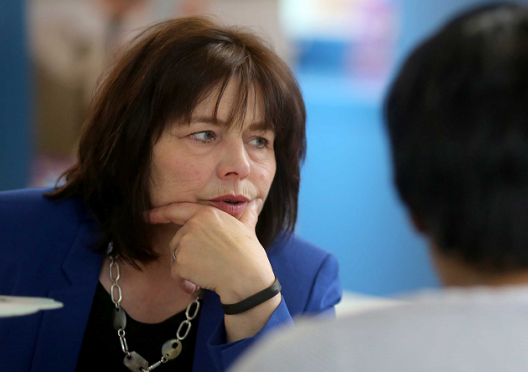An SNP minister has played down the prospect of using Holyrood’s new powers to mitigate the Conservative Government’s controversial “rape clause” policy.
Jeane Freeman, the social security minister, said the Scottish Government is looking at how to offset the impact of new welfare restrictions, but warned they cannot keep “putting a sticking plaster” on Tory cuts.
She also called for MSPs to get a vote on the “degrading” two-child cap for tax credits, which includes the so-called rape clause.
The minister spoke ahead of a protest in Glasgow’s George Square on Thursday night, where campaigners demanded the UK Government makes a U-turn.
Ms Freeman said they are “actively looking” at how to mitigate the Conservative policy, adding: “We have a number of very difficult decisions to make and what is clear is without full control of social security spend in Scotland and more tax powers then we are seriously limited in how much we can do.”
Scottish Conservative leader Ruth Davidson, who has been under fire for defending the policy, responded to her critics on Thursday by suggesting the SNP backs up their rhetoric and use the new powers at their disposal.
She said: “If Nicola Sturgeon simply wants to use this to complain about the policies of the UK Government – and not act at Holyrood when she has the power to do so – then she leaves herself open to the charge of gross hypocrisy.”
Under the devolution of welfare powers, which brings £2.7billion worth of benefits under Holyrood’s control, ministers could top-up tax credits to an unlimited number of children, or create an entirely new benefit.
On the Scottish Parliament’s role, Ms Freeman said: “I think it should be debated in Holyrood. I think it’s really important that women in Scotland understand where politicians in Scotland stand on this question.”
The debate and subsequent vote in Holyrood would not be binding on the UK Government, but would deliver a message that Scotland is opposed to it.
Tax credits will be capped at two children under UK Government’s welfare reforms that came into force last week, unless it can be proved that further offspring were a result of rape.
The controversial clause relies on rape verification by the police, NHS or charities. The Department for Work and Pensions says the exception is being delivered in a “compassionate” way and current claimants will not face a reduction.










